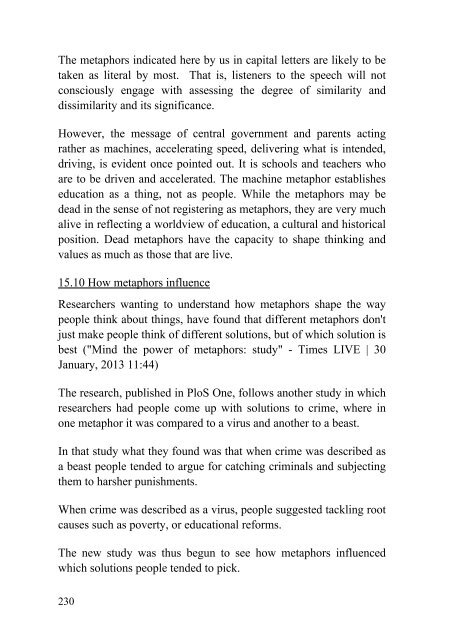THE MAGICAL POWER OF MENTAL IMAGES - DEAN AMORY
José Ortegay Gasset was so impressed by the power of metaphors that he compared them to a tool for creation which God forgot inside of us when he created man. When I asked myself where metaphors get this tremendous power from, I realized that mankind has an even much more powerful tool at its disposition: Mental Imagery. Mental Imagery is the key to achieving our goals and the internal screen on which we project our dreams. It allows us to simulate procedures; familiarize with environments and situations before we get to know them in "real life"; It helps us to relax, but just as well will arouse us or prepare us for future actions. With the help of Mental Imagery, we can build confidence and readiness, stimulate healing and recovery, change our behaviour or literally borrow the mind of a genius. How to learn and implement this power and benefit from its many advantages, is what this book is all about.
José Ortegay Gasset was so impressed by the power of metaphors that he compared them to a tool for creation which God forgot inside of us when he created man.
When I asked myself where metaphors get this tremendous power from, I realized that mankind has an even much more powerful tool at its disposition: Mental Imagery.
Mental Imagery is the key to achieving our goals and the internal screen on which we project our dreams. It allows us to simulate procedures; familiarize with environments and situations before we get to know them in "real life"; It helps us to relax, but just as well will arouse us or prepare us for future actions. With the help of Mental Imagery, we can build confidence and readiness, stimulate healing and recovery, change our behaviour or literally borrow the mind of a genius.
How to learn and implement this power and benefit from its many advantages, is what this book is all about.
You also want an ePaper? Increase the reach of your titles
YUMPU automatically turns print PDFs into web optimized ePapers that Google loves.
The metaphors indicated here by us in capital letters are likely to be<br />
taken as literal by most. That is, listeners to the speech will not<br />
consciously engage with assessing the degree of similarity and<br />
dissimilarity and its significance.<br />
However, the message of central government and parents acting<br />
rather as machines, accelerating speed, delivering what is intended,<br />
driving, is evident once pointed out. It is schools and teachers who<br />
are to be driven and accelerated. The machine metaphor establishes<br />
education as a thing, not as people. While the metaphors may be<br />
dead in the sense of not registering as metaphors, they are very much<br />
alive in reflecting a worldview of education, a cultural and historical<br />
position. Dead metaphors have the capacity to shape thinking and<br />
values as much as those that are live.<br />
15.10 How metaphors influence<br />
Researchers wanting to understand how metaphors shape the way<br />
people think about things, have found that different metaphors don't<br />
just make people think of different solutions, but of which solution is<br />
best ("Mind the power of metaphors: study" - Times LIVE | 30<br />
January, 2013 11:44)<br />
The research, published in PloS One, follows another study in which<br />
researchers had people come up with solutions to crime, where in<br />
one metaphor it was compared to a virus and another to a beast.<br />
In that study what they found was that when crime was described as<br />
a beast people tended to argue for catching criminals and subjecting<br />
them to harsher punishments.<br />
When crime was described as a virus, people suggested tackling root<br />
causes such as poverty, or educational reforms.<br />
The new study was thus begun to see how metaphors influenced<br />
which solutions people tended to pick.<br />
230


















